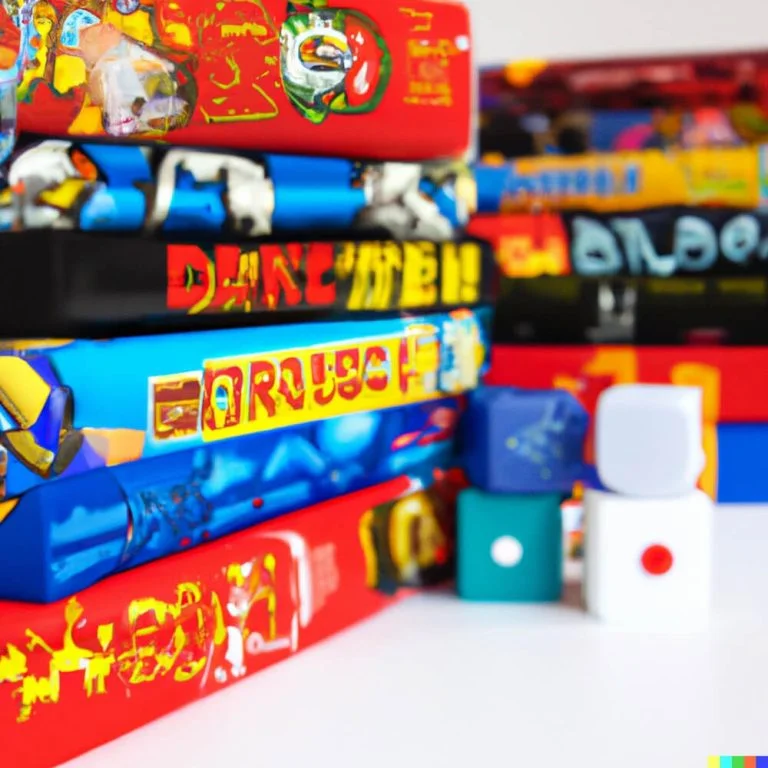Introduction
Introduction – A board game shelf is an accessible, compact storage solution that provides an attractive addition to any home. It is ideal for organizing and keeping track of your favorite family games. The shelves also save precious shelf space in your home as they give you the capability to store several board games together in one place. With a board game shelf, you can quickly access your favorite games without needing to search through closets or drawers. Additionally, having a designated place to store them helps reduce clutter and allows more space for other items. Finally, the shelves allow you to keep your beloved family game night going by easily finding and locating each game.
Materials Needed
To build a board game shelf, you will need the following materials:
– 8 x 8-foot plank of 3/4 inch thick plywood ($50.00 at your local hardware store)
– Circular saw ($30.00 at your local hardware store)
– Hammer and nails($10.00 at your local hardware store)
– Wood glue ($5.00 at your local craft supply store)
– Polyurethane wood varnish ($20.00 per gallon, available online or at your local craft supply store).
– 4 x 2” screws and wall anchor or toggle bolt kits to mount the board games on the wall (around $1.50 each, available online or at your local hardware store).
Optional materials include paint for decorating and clear plastic sheeting for covering the top of the shelf to keep board games dust free ($5.00 for a small can of paint, $2 per yard of plastic sheeting, available online or at your local craft supply store).
Design Considerations
Design Option 1: An open shelf
Pros:
– Easy and quick to assemble
– Can store multiple types of board games
– Can be customized with dividers or drawers for more complex storage needsCons:
– Does not cover the board games, so it might be more susceptible to dust and dirt buildup
– No protection against accidental spills or damage
Design Option 2: A closed cabinet shelving unit
Pros:
– Offers a bit more protection from dust and dirt buildup
– Keeps boards out of sight when not in use, providing better storage optionsCons:
– May involve more work to build than an open shelf
– Drawers can become overstuffed if too many games are stored
Making the Shelf
In order to make a board game shelf, you will need a few tools and materials, such as: an electric drill and drill bit, saws (jigsaw, circular or miter), wood glue, screws and small door hinges. You may also want to use a variety of stains and finishes for the shelf.
Start by deciding how large you want the shelf to be. Measure out the appropriate size for your space and mark it on your chosen material. Once you have your measurements, it’s time to get cutting. Saw your pieces according to the markers made. Use a jigsaw for curved or non-straight cuts.
Once your pieces are cut, begin assembly with wood glue if desired to make sure everything stays together safely. After structuring the main frame of the board game shelf, use screws along with wood glue (if desired) at each joint in addition to one where shelves meet perpendicular sidewalls/dividers of the structure (if included).
Before committing to a final design and applying any stains or finishes such as paint or sealant on top of wood sealer, take some time doing a test run; lay all pieces out on flat surface in their per-dug design before screwing everything together and check that each piece fits snugly aside from joints appropriately fit in overall design. Make any adjustments as necessary during this step before permanently sealing into position via screws or other hardware pieces as directed above/at each joint area/points specified in layout above. If satisfaction is achieved, then continue onward with staining and finishing steps before final installation into residential space!
Finishing Touches
Consider adding labels to the shelf to make it easier to find the games that you are looking for. Labels can be very simple, like a colored shape cutout of the logo on each game label, or they can be more artifact-like photo cards with each game’s title and artwork on them. Another way to customize your board game shelf is to paint or stain it in an attractive color that adds character and that complements both the room and the games being stored. You could also use wallpaper to cover the back wall of the shelf, leaving plenty of room for stickers from games you play regularly or have some fun with a chalkboard design where you can write notes, drawings or keepsake messages about gaming sessions. Finally, use colored craft wire instead of nails to hang a few elements like dice trays, scoreboards and playing pieces on smaller pegs ” these are great for promoting interactive family play!
Conclusion
Materials:
– 1/2 inch plywood (1 sheet)
– 1 inch x 2 inch lumber (5 x 8 foot length)
– Wood glue
– Sandpaper
– Paint or stain
– Hardware, e.g. screws, nails, dowels
– Optional woodworking tools, e.g. saws and drills
Steps:
1. Measure the space you have available to build the shelf in your home.
2. Cut two pieces of plywood to fit your desired shelf size.
3. Cut four pieces of 1×2 lumber to serve as support beams for your shelf.
4. Attach the 2x4s together with wood glue and nails to form a frame for the shelf boards to sit on top of.
5. Attach the plywood shelves over the frame with more wood glue and screws from underneath the frame for added support once dry and secure them with dowels if desired for extra reinforcement along each joint
6. sand down any rough edges and apply paint or stain as desired along all surfaces depending on if you wish it to blend in with existing decor, stand out or have a distressed look
Tools Required:
Measuring tape, saw, drill, nails, screws and optional woodworking tools
Benefits Of Having An Organized Game Shelf:
– Easier to find games compared to searching through miscellaneous piles of games on shelves or floors
– Improved organisation resulting in less time wasted looking through cluttered piles of games when trying to find one specific game
– Cleaner looking appearance – an ordered collection of games looks more aesthetically pleasing than disorganised piles

I love playing all kinds of games – from classics like Monopoly to modern favourites like Ticket to Ride.
I created this blog as a way to share my love of board games with others, and provide information on the latest releases and news in the industry.





